(1) KGB. Fantastic Fiction at KGB reading series hosts Ellen Datlow and Matthew Kressel present Peng Shepherd and Paul Park on Wednesday, April 12 at 7:00 p.m. Eastern. Location: KGB Bar, 85 East 4th Street, New York, NY 10003 (Just off 2nd Ave, upstairs).
Peng Shepherd
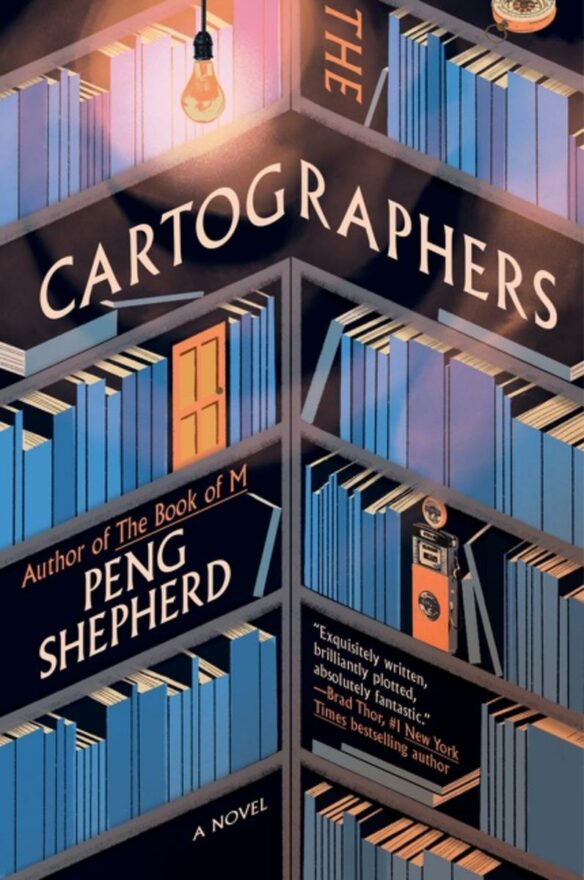
Peng Shepherd is the nationally bestselling, award-winning author of The Book of M and The Cartographers. Her novels have been named Best Book of 2022 by The Washington Post, Amazon, Elle, and The Verge, Best Book of the Summer by the Today Show and NPR, and Pick of the Month by Good Morning America, as well as optioned for television. She was born and raised in Phoenix, Arizona, where she rode horses and trained in classical ballet, and has lived in Beijing, Kuala Lumpur, London, New York and Mexico City.
Paul Park
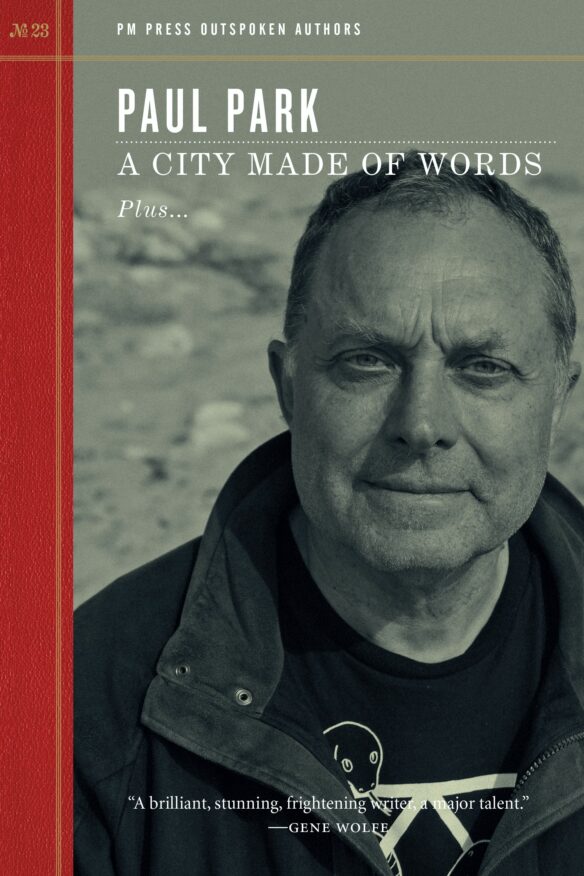
Paul Park is the author of three collections of short stories, most recently A City Made of Words from PM Press. His twelve novels include A Princess of Roumania, Celestis, and All Those Vanished Engines. His work has been nominated for the Nebula and World Fantasy Awards, among many others. He recently retired from teaching writing and literature at Williams College for many years, and is currently working on a series of screenplays for SunHaus Productions. He lives in Berkshire County, Massachusetts, with his wife, Deborah.
(2) HORROR POETS. At the Horror Writers Association blog “It’s National Poetry Month—How Incredibly Frightening!” Denise Dumars introduces the series:
Now that I’ve got your attention, April is National Poetry Month. Naming the month thusly implies that something of great value is being overlooked. Every poet in America knows what I’m talking about. Poetry has never had the huge following in the U.S. that it boasts in some other cultures; in fact, if you are an HWA member who lives in another country, I’d love to hear how poetry is viewed by the general public where you live. I know some countries where it is very much a part of the national conversation, and is not reserved for the so-called “ivory tower” or wherever people in the U.S. think it lives. (Folks, check the cemeteries, Goth clubs, museums, craft breweries, coffee houses, public libraries, and any place with a senior or student discount! I guarantee a poet will be hanging out in one of those locales or somewhere that has a Happy Hour or free WiFi.)
I write science fiction and fantasy poetry as well as horror poetry, and so I know the trouble poets in other genres face when trying to get genre fiction organizations to recognize it. That’s one of the reasons HWA is so special. Would you believe that horror poetry has been on the Bram Stoker Awards ballot for 23 years? I don’t think I realized it had been recognized by HWA for that long. It makes me very proud to be a member of HWA. But even within our ranks people often overlook poetry as a vitally important part of the genre, so here we are, people! Live poets! Two shows on Sunday!
Here are excerpts from the first four Q&A’s in the series.
What sparked your interest in horror poetry? Was there a particular event or work that inspired you to delve into the darker side of poetry?
I never really understood poetry. I struggled with it for years, both as a reader and as a writer, until I heard someone—I think it was Anselm Berrigan—describe it this way: Poetry is a machine you put people through. And then it just clicked. That was the moment where it fell into place for me, and unlike prose (with which my relationship has always been a slow, iterative kind of process), the transition from confused frustration to comfortable acceptance was immediate. That’s not to say that poetry is easy for me (is it for anyone?), but like realizing what a chisel is meant for, I could at least begin to work with this new tool in ways I couldn’t before.
How do you balance the need to be evocative and disturbing with the constraints of poetic structure and form? Are there any particular strategies you use to create tension and build suspense in your horror poems?
All of us are disturbed by different things, so my goal isn’t necessarily to disturb the reader. My first goal is clarity. Am I conveying what I want to convey? Whether that’s an image, or an emotion, or a concept, I need to make sure it gets across in words—and then I try to balance that communication with aesthetics.
Can you describe your creative process when writing horror poetry? Do you have any rituals or techniques that help you tap into your darkest fears and bring them to life on the page?
Do something related to what you want to be every day. I try to free-write something every day, even if it’s just a scrap or stub. Sometimes I will use a prompt, although most of them are pretty generic. Importantly, I try to read a couple of poems a day – either from a collection or from a site like the Poetry Foundation. I like the latter because I don’t know what to expect and get broad exposure. Poetry should be disruptive, and it’s easier to be surprised and outside your comfort zone when you don’t know what you’re getting into. The other thing is to try and go out into the world and experience things actively – try to really look at things and see them with fresh eyes. There’s a lot of juice in trying to describe something in a very specific way. I don’t know that I tap my darkest fears. I’m a reserved sort, clinical and academic by temperament and training. I tend to want to keep those things for myself. Poetry tends to work against that, which makes for an interesting struggle….
How do you balance the need to be evocative and disturbing with the constraints of poetic structure and form? Are there any particular strategies you use to create tension and build suspense in your horror poems?
This is absolutely a balance that must be tended to with intention. I think stronger poets think this through and try out different iterations before finding what works. I’m still learning how to do this, so I enjoy reading the works of other poets and playing with imagery and form in my own work. I rely heavily upon the sounds of words to build tension and evoke emotions – alliteration, assonance, anaphora, cacophony – all the tricks!
(3) THE TEST. NPR reminds people “What is the Bechdel test? A shorthand for measuring representation in movies”. Named for the test’s creator, cartoonist Alison Bechdel.
…BECHDEL: As they talk, they’re trying to decide what movie to go see.
UNIDENTIFIED ACTOR #2: (As character) I only go to the movie if it satisfies three basic requirements. One, it has to have at least two women in it…
(SOUNDBITE OF BELL)
UNIDENTIFIED ACTOR #2: (As character) …Who, two…
BECHDEL: Who talk to each other.
(SOUNDBITE OF BELL)
UNIDENTIFIED ACTOR #2: (As character) …About, three, something besides a man.
(SOUNDBITE OF BELL)
BECHDEL: And the punch line is…
UNIDENTIFIED ACTOR #2: (As character) Last movie I was able to see was “Alien.” The two women in it talk to each other about the monster.
(SOUNDBITE OF SCREECH)
…(SOUNDBITE OF ARCHIVED RECORDING)
SAM JONES: The Bechdel Test.
JESSICA CHASTAIN: But then I looked at the test, and I thought, OK, it doesn’t seem too unreasonable. And then I looked at my films, and I realized not one of my films has passed that test….
(4) SADDLE UP! Space Cowboy Books is hosting an online reading and interview with Ai Jiang, author of Linghun, on Tuesday April 11t at 6:00 p.m. Pacific. Register for free here.
From acclaimed author Ai Jiang, follow Wenqi, Liam, and Mrs. to the mysterious town of HOME, a place where the dead live again as spirits, conjured by the grief-sick population that refuses to let go. This edition includes a foreword by Yi Izzy Yu, Translator of The Shadow Book of Ji Yun, the essay “A Ramble on Di Fu Ling & Death” by the author, and two bonus short stories from Jiang: “Yǒngshí” and “Teeter Totter.”

(5) THE MEMORY HOLE. So you bought that ebook before the revisions were made? The New York Times reminds Kindle readers, “It’s Their Content, You’re Just Licensing it”.
Amid recent debates over several publishers’ removal of potentially offensive material from the work of popular 20th-century authors — including Roald Dahl, R.L. Stine and Agatha Christie — is a less discussed but no less thorny question about the method of the revisions. For some e-book owners, the changes appeared as if made by a book thief in the night: quietly and with no clear evidence of a disturbance.
In Britain, Clarissa Aykroyd, a Kindle reader of Dahl’s “Matilda,” watched a reference to Joseph Conrad disappear. (U.S. editions of Dahl’s books were unaffected.) Owners of Stine’s “Goosebumps” books lost mentions of schoolgirls’ “crushes” on a headmaster and a description of an overweight character with “at least six chins.” Racial and ethnic slurs were snipped out of Christie’s mysteries.
In each case, e-books that had been published and sold in one form were retroactively (and irrevocably) altered, highlighting what consumer rights experts say is a convention of digital publishing that customers may never notice or realize they signed up for. Buying an e-book doesn’t necessarily mean it’s yours.
“Nobody reads the terms of service, but these companies reserve the right to go in there and change things around,” said Jason Schultz, the director of New York University’s Technology Law and Policy Clinic and a co-author of “The End of Ownership.”
“They make it feel similar to buying a physical book, but in reality it’s 180 degrees different,” he added….
(6) BOOK OR MOVIE: WHICH WAS BETTER? Inverse’s Ryan Britt claims “Logan’s Run Is a Sci-Fi Masterpiece Because it Rewrote the Book”. I’m not sure who thinks the movie is a masterpiece besides Britt, though – it finished behind No Award in the 1977 Best Dramatic Presentation Hugo vote.
…Although it was published in the same era as Frank Herbert’s Dune and Philip K. Dick’s Do Androids Dream of Electric Sheep?, the novel isn’t spoken about in the same reverent tones relative to its movie adaptation. The number of people who have seen Logan’s Run may not be huge, but the number who still read the book must be minuscule. There are several ways to explain this, the most tempting of which would be to argue that the movie is simply better. But that’s not it.
Both the novel and the film float a similar dystopian premise about futuristic population control. There’s an age where people are required to die, those who try to skirt this rule are called “runners,” and they’re hunted by people called Sandmen. In the movie, the age of “renewal” is 30. In the novel, it’s just 21, a stark difference that makes the novel weirder and hard to buy. But the motivation was clear: the book represents a kind of twisted Lord of the Flies endgame. What if all the college kids protesting in the ‘60s really did run the world?
The novel is a bit more subtle than that, but this central premise is largely why it hasn’t aged well. Which is a shame because, unlike the movie, the world-building is expansive. In the film, Logan (Michael York), Jessica (Jenny Agutter), and all the other twenty-somethings live in domed cities, where the outside world is a distant memory. So when Logan and Jessica escape the domes, they’re out in the wilderness and we’re in Planet of the Apes territory, in which familiar buildings like the Capitol have been overrun by vines and cats.
These features make Logan’s Run the quintessential dystopia, more reminiscent of Brave New World than its own source material….
(7) MOBY KHAN. “Star Trek: Every Literary Reference In The Wrath Of Khan” — ScreenRant furnishes a “Cliff’s Notes” for the movie – not that you need it.
… Star Trek II: The Wrath of Khan‘s references to Moby-Dick are anything but subtle, but the movie finds a way to perfectly utilize Herman Melville’s controversial narrative. Making his intentions clear throughout the story, Khan actually quotes the 1851 novel on several occasions and even uses his last dying breath to invoke one of its most moving passages. “From hell’s heart, I stab at thee,” is so much more than Khan showing off his well-read vocabulary, but instead succinctly encapsulates how he views Kirk and the situation he’s been living in for years on Ceti Alpha V. The parallels are on-the-nose, but powerful nonetheless….
(8) MEMORY LANE.
2006 – [Compiled by Cat Eldridge.] Patricia A. McKillip’s Solstice Wood
I assume that you’re familiar with the work of this author but it’s more likely that you’ve encountered her more fantastic works such as The Riddle-Master of Hed, The Cygnet series or The Forgotten Beasts of Eld.
Solstice Wood was published by Ace Books seventeen years ago as part of the Winter Rose duology with Winter Rose which was published a decade before this novel.
The cover on the left is the one from the Ace Books publication. Before this novel, Kunuko Y. Craft did all of the Ace covers for her books. This cover art is by Gary Blythe.
It would win the Mythopoeic Fantasy Award for Adult Literature.
I love this novel as what we have here is a quiet, gentler magic at work. I won’t say more about the novel as that would involve, errrr, SPOILERS as you know.
If you’re inclined, there’s a detailed review of Solstice Wood of course over at Green Man as we’re terribly fond of her fiction. We also did a nice interview with her shortly before her death.
So without further commentary, here’s the Beginning…
Sylvia Gram called at five in the morning. She never remembered the time difference. I was already up, sitting at the table in my bathrobe, about to take my first sip of coffee. The phone rang; my hands jerked. Coffee shot into the air, rained down on my hair and the cat, who yowled indignantly and fled. I stared at the phone as it rang again, not wanting to pick up, not wanting to know whatever it was Gram wanted me to know.
At the second ring, I heard Madison stir on my couch-bed.
“Syl?”
“I’m not answering that.”
He unburied his face, squinted at me. “Why not? You having a clandestine affair?”
“It’s Gram.”
His head hit the pillow again on the third ring. “Is not,” he mumbled. “Tell him to leave a message and come back to bed.”
“I can’t,” I said firmly, though his naked body was exerting some serious magnetic pull. “I have to go to the store and unpack a dozen boxes of books.”
“Come back for five minutes. Please? She’ll leave a message.”
“She won’t.” It rang again. “Only the weak-minded babble their business to inanimate objects.”
“Hah?”
“She says.”
It rang for the fifth time; I glowered at it, still not moving. I could have shown her any number of fairy tales in which important secrets imparted to a stone, to the moon, to a hole in the ground, had rescued the runaway princess, or the youngest brother, or the children lost in the wood. But Gram believed in fairies, not fairy tales, and in her world magic and machines were equally suspect.
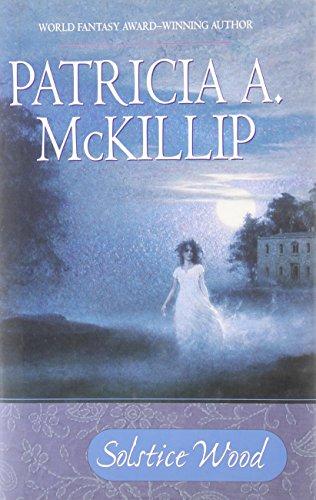
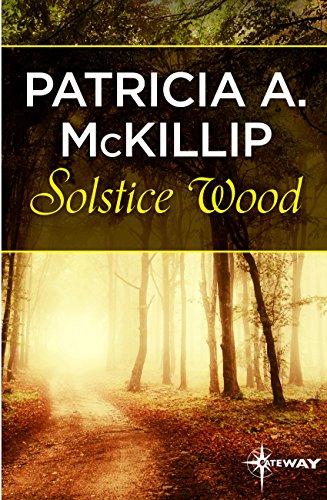
(9) TODAY’S BIRTHDAYS.
[Compiled by Cat Eldridge.]
- Born April 5, 1909 — Albert Broccoli. American film producer responsible for all the Bond films up to License to Kill, either by himself or in conjunction with others. He also was the producer of Chitty Chitty Bang Bang, and executive produced The Gamma People. (Died 1996.)
- Born April 5, 1916 — Bernard Baily. A comics writer, editor and publisher. Best remembered as co-creator of The Spectre and Hourman. For DC Comics precursor National Comics, Baily co-created and drew the adventure feature “Tex Thomson” in Action Comics #1 (June 1938), the landmark comic book that introduced Superman. In 1943, he founded his own studio. Among the artists who started out in the industry there were Frank Frazetta, Carmine Infantino and Gil Kane. (Died 1996.)
- Born April 5, 1917 — Robert Bloch. His Wiki page says he’s best known as the writer of Psycho, but I’ll guarantee that only film geeks and many of y’all know that. I know him best as the writer of the Trek “Wolf in the Fold” episode, one of three Trek episodes he did. His Night of the Ripper novel is highly recommended. And I know “That Hellbound Train” which won him first Hugo at Detention is the piece by him that I’ve read the most. He received a special committee award at L.A. Con II, where they were honored him for fifty years as SF professional. Impressive indeed. And yes, he’s a member of First Fandom as he should be. (Died 1994.)
- Born April 5, 1926 — Roger Corman, 97. Ahhhh popcorn films! (See popcorn literature for what I mean.) Monster from the Ocean Floor in the early Fifties was his first such film and Sharktopus vs. Whalewolf on Syfy just a few years back was another such film. He’s a man who even produced such a film called, errr, Munchies. A Worldcon guest of honor in 1996.
- Born April 5, 1950 — A.C. Crispin. She wrote several Trek and Star Wars novelizations and created her series called Starbridge which was heavily influenced by Trek. She also co-wrote several Witch World novels, Gryphon’s Eyrie and Songsmith, with Andre Norton. Crispin was also the co-founder of Writers Beware – the bane of literary fraudsters and scammers everywhere. Pirates of the Caribbean: The Price of Freedom was her last novel prior to her death from bladder cancer while in hospice care. (Died 2013.)
- Born April 5, 1955 — Anthony Horowitz, 68. He wrote five episodes of Robin of Sherwood, and he was both creator and writer of Crime Traveller. He’s also written both Bond and Holmes novels. If you can find a copy, Richard Carpenter’s Robin of Sherwood: The Hooded Man is a very nice fleshing out of that series in literary form.
- Born April 5, 1965 — Deborah Harkness, 58. She’s the author of the All Souls Trilogy, which consists of A Discovery of Witches and its sequels Shadow of Night and The Book of Life. I listened to the Jennifer Ikeda-narrated audiobooks which was an amazing experience. Highly recommended as Harkness tells a remarkable story here. I’m not even fond ’tall of vampires in any form and hers actually are both appealing and make sense.
(10) EXODUS AND BACK AGAIN. Inverse remembers when the Matt Smith years began: “13 Years Ago, ‘Doctor Who’ Rebooted Itself Again — And Changed Sci-Fi Forever”
There’s a moment during David Tennant’s live announcement of his exit from Doctor Who, made via satellite video at Britain’s National Television Awards, when you can hear a woman scream “No!” over the sounds of shock and disbelief from the audience. That nameless woman unintentionally became the voice of countless fans devastated by the departure of the beloved actor, whose time on Doctor Who had turned him into a geek icon. But change is built into the DNA of Doctor Who, and it was inevitable that Tennant, like the nine actors before him, would leave the show. But at the risk of sounding dramatic, the stakes for this change were never higher….
(11) JEOPARDY! Andrew Porter watched a contestant on tonight’s Jeopardy! run afoul of an sf-themed item.
Category: Literary Bad Day for the Planet
Answer: Arthur C. Clarke’s “The Star” is a sun that went supernova, killing a planet, & is this celestial object from the New Testament.
Wrong question: What is the Star of David?
Right question: What is the Star of Bethlehem?
(12) SOUR NOTES. “Man who made £1.2m from fake vinyl records caught out by Clash fan” reports the Guardian. You can fool some of the people some of the time, but not all of the people all of the time – especially ardent music fans.
A businessman who made more than £1m selling fake vinyl records was caught after a fan of punk band the Clash complained that the sound quality of an LP he had bought was not as sharp as it should have been.
Trading standards officers launched an investigation into Richard Hutter and found that he had been selling thousands of counterfeit records to rock and pop fans over a six-year period.
Hutter, 55, from Ringwood, Hampshire, was given a suspended jail sentence, ordered to do 250 hours unpaid work and told to wear a tag for three months.
He charged up to £35 for albums from bands ranging from the Beatles to Pink Floyd, Nirvana and Amy Winehouse.
He was found out when a Clash fan demanded his money back because of the poor sound quality on the record he had bought online.
When the refund was refused the customer complained to trading standards officers, who bought two sample records – Appetite for Destruction by Guns N’ Roses and Songs for the Deaf by Queens of the Stone Age – from Hutter’s online business and both turned out to be fakes.
Hutter’s home was searched and officers seized his phone and laptop, which led to them uncovering the scale of his operation. As well as selling through his website and a US site, he listed almost 1,200 LPS for sale on eBay in one year.
When questioned, Hutter denied knowing they were counterfeit records and said he had sourced them from Europe and sold them on. He pleaded guilty to 13 counts of selling counterfeit records and one count under the Proceeds of Crime Act (2002).
He was sentenced at Bournemouth crown court and was given a four-month prison sentence, suspended for 24 months. A £373,000 confiscation order was also made.
Martin Thursby, of Dorset Trading Standards, said: “Vinyl sales declined rapidly after CDs were introduced but the resurgence in vinyl started in around 2010.
“Demand is now so great that there are not enough vinyl pressing plants to meet demand. Hutter was aware of the increase in popularity and set up his business to take advantage of that.
“The LPs Hutter was selling were generally good copies that came to light because they were bought by avid fans of the music who could spot the small differences which showed the records were counterfeit.”…
(13) UNDER THE U235. [Item by Mike Kennedy.] A remote-operated underwater vehicle is being used to image the Fukushima nuclear reactors. A 5-minute portion of the first 39-hour video has been released. “New images from inside Fukushima reactor spark safety worry” at AP News. Watch the video at the link.
Images captured by a robotic probe inside one of the three melted reactors at Japan’s wrecked Fukushima nuclear power plant showed exposed steel bars in the main supporting structure and parts of its thick external concrete wall missing, triggering concerns about its earthquake resistance in case of another major disaster.
The plant’s operator, Tokyo Electric Power Company Holdings, has been sending robotic probes inside the Unit 1 primary containment chamber since last year. The new findings released Tuesday were from the latest probe conducted at the end of March.
An underwater remotely operated vehicle named ROV-A2 was sent inside the Unit 1 pedestal, a supporting structure right under the core. It came back with images seen for the first time since an earthquake and tsunami crippled the plant 12 years ago. The area inside the pedestal is where traces of the melted fuel can most likely be found.
An approximately five-minute video — part of 39-hour-long images captured by the robot — showed that the 120-centimeter (3.9-foot) -thick concrete exterior of the pedestal was significantly damaged near its bottom, exposing the steel reinforcement inside.
TEPCO spokesperson Keisuke Matsuo told reporters Tuesday that the steel reinforcement is largely intact but the company plans to further analyze data and images over the next couple of months to find out if and how the reactor’s earthquake resistance can be improved….
(14) IN THE VILLAGE. EV Grieve shared “A new corner of the ‘Star Wars’ galaxy” – a photo of a new mural design going up in the East Village (NYC). See the image at the link.
EVG contributor Stacie Joy spotted local artist-illustrator Rich Miller starting on a new mural on the NE corner of Seventh Street and Avenue C.
And a sneak preview of what’s to come… a work that includes Grogu, aka Baby Yoda…
(15) SISTERS IN CRIME BENEFIT AUCTION FOR INNOCENCE PROJECT. Vera Stanhope’s iconic hat and coat worn on the TV crime drama Vera will be centerpiece of a charity auction.
Sisters in Crime, an association of authors who specialize in writing stories about justice, are banding together to champion real-life justice. From May 18-21, 2023, the international writing group will host an online auction to support the Innocence Project, a non-profit that works to free the innocent, prevent wrongful convictions, and create fair, compassionate, and equitable systems of justice for everyone.
Sisters in Crime aims to raise $35,000 for the Innocence Project. Writers and agents have donated various items of interest to crime novel fans, including signed books, the chance to name a character in an upcoming book, consultations, and manuscript critiques.
Fans can bid on the coat worn by Brenda Blethyn, who plays Vera Stanhope on TV in a role created by bestselling mystery author Ann Cleeves. They can also bid on a 50-page critique by Tracy Clark (Hide) or name a character in a future book by bestselling author Michael Connelly, author of the bestselling Harry Bosch series. Potential bidders can visit the site to see all the items and place a bid.
The Innocence Project is well known for using DNA evidence to overturn wrongful convictions. Their policy work addresses each of the contributing factors to wrongful convictions: eyewitness misidentification, misapplication of forensic science, false confessions, unreliable jailhouse informant testimony, and inadequate defense.
Stephanie Gayle, the Immediate Past President of Sisters in Crime, created the auction as part of her legacy project for the organization. She was inspired by the work of Mystery Loves Democracy, a coalition of authors who raised funds for Fair Fight Action in 2022.
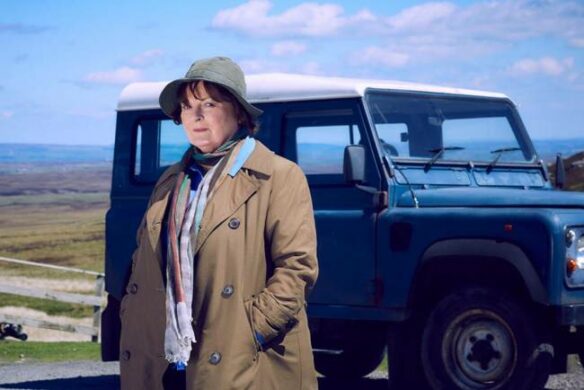
(16) BAT SIGNAL. My boss and I used to have a running joke about turning on the “bat light” when she needed a quick answer. I could have sent her one of these for her office: “Metal Earth® Batman v Superman Bat-Signal 3D Metal Model Kit”.
Construct a 3D Metal model of the Bat-Signal used in the iconic movie Batman vs Superman: Dawn of Justice in 2016. High quality with a unique design and laser cut ready to assemble. No glue or solder needed.

[Thanks to Mike Kennedy, Andrew Porter, John King Tarpinian, Mark Kressel, Chris Barkley, Michael Toman, and Cat Eldridge for some of these stories. Title credit belongs to File 770 contributing editor of the day Cliff.]


